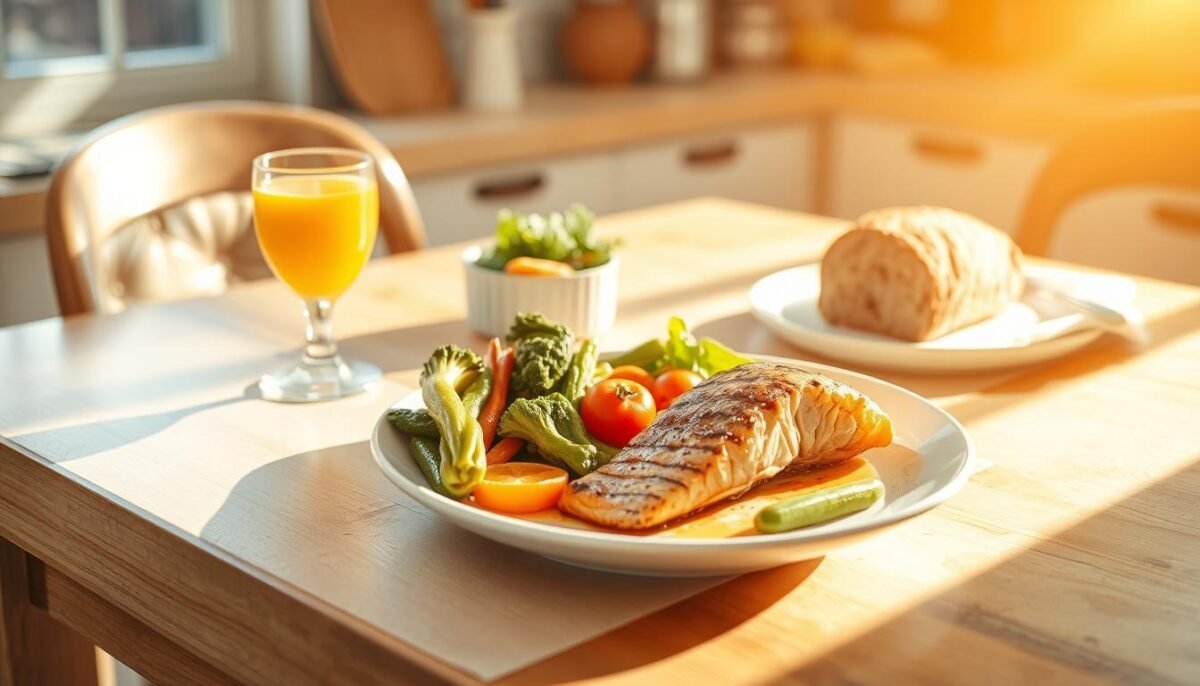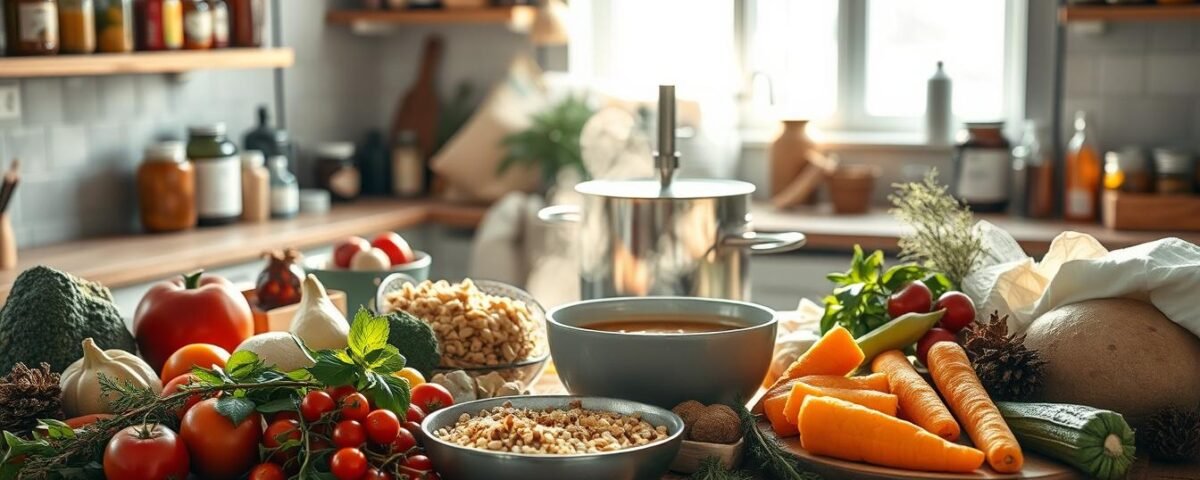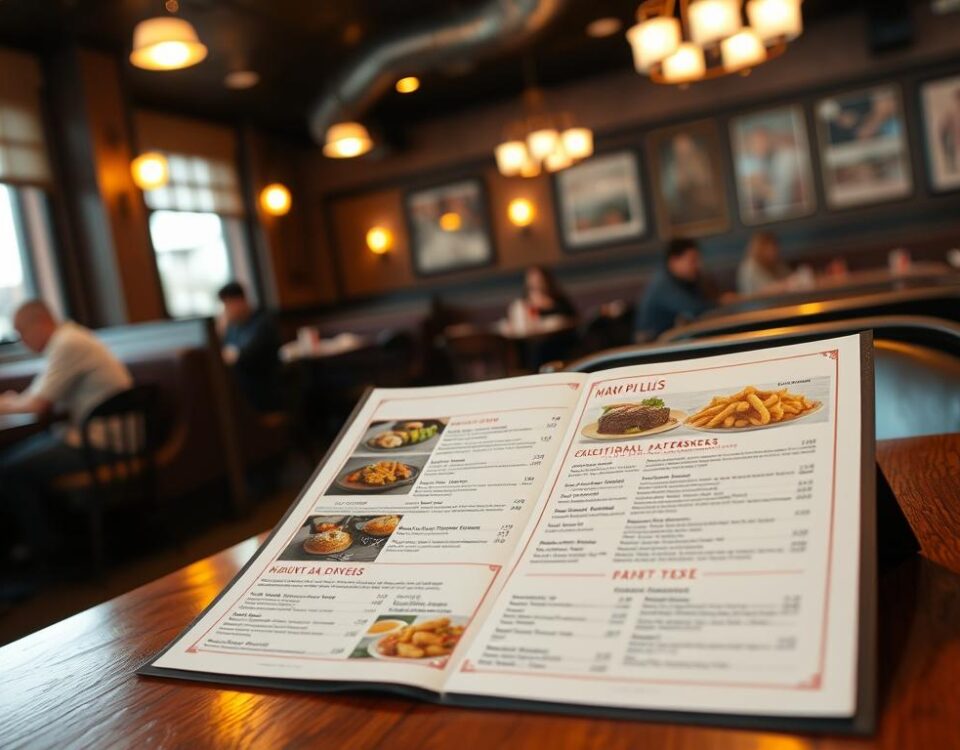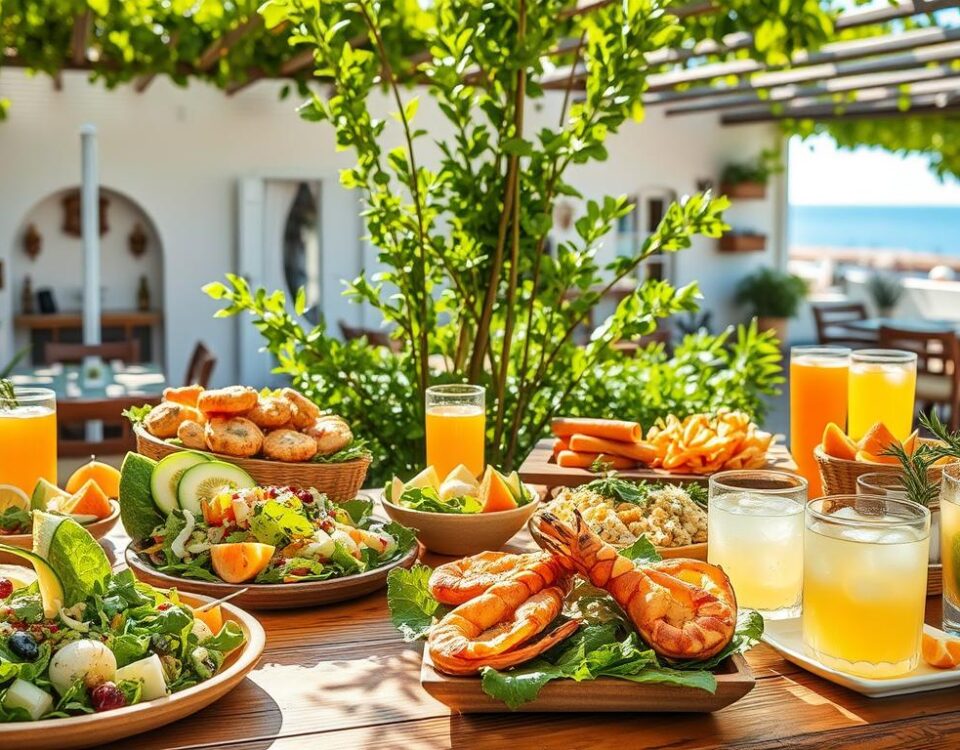
Why Your Immune System Is Weak—and How to Naturally Strengthen It
April 20, 2025
7 Powerful Superfoods That Help Fight Colds and Flu
April 20, 2025I’ll never forget the year I spent December buried under tissues, missing holiday gatherings while nursing one cold after another. It felt like my body had surrendered to the season. But then I realized: my plate was part of the problem. The endless comfort foods and skipped salads weren’t doing me any favors. That’s when I discovered how powerful—and simple—it is to work with your body’s defenses through what you eat.
Take my friend Sarah, who swears by her “armor-building” lunch routine. Instead of reaching for processed snacks during hectic workdays, she packs vibrant bowls with salmon, roasted sweet potatoes, and crisp red peppers. After sticking to this habit, she sailed through last year’s flu season without a single sick day. Her secret? Consistency beats quick fixes.
Science backs this up. While no magic pill exists, research shows that combining nutrient-rich foods like fatty fish (packed with omega-3s) and bell peppers (bursting with vitamin C) creates a shield-like effect for your natural defenses. Pair these with quality sleep and handwashing, and you’ve got a recipe for resilience.
Key Takeaways
- Your body’s defense system thrives on variety, not single “miracle” foods
- Fatty fish and colorful vegetables deliver essential nutrients for immune support
- Daily habits like hydration and rest are just as crucial as your diet
- Building resilience starts with small, sustainable changes in the kitchen
- Balance—not perfection—creates lasting protection during challenging seasons
Introduction: Setting the Stage for Winter Immune Support
Cold months bring cozy sweaters—and sneaky health hurdles. Dry air and crowded spaces create perfect conditions for germs to thrive. I learned this the hard way when my holiday travel streak ended with a stubborn cough that outlasted my vacation days.
Understanding Seasonal Challenges
Research shows indoor heating reduces humidity to desert-like levels—under 40% in many homes. This parched air lets viruses float longer, like unwelcome confetti at a party. Add close-quarters gatherings, and our defenses face a triple threat:
| Challenge | Effect | Solution |
|---|---|---|
| Low humidity | Longer virus survival | Use humidifiers |
| Less sunlight | Lower vitamin D | Eat fortified foods |
| Indoor crowds | Faster germ spread | Wash hands frequently |
The CDC stresses handwashing as the first line of defense—scrub for 20 seconds, about the time it takes to hum “Happy Birthday” twice. Simple habits build strong shields.
Why Food Matters for Immunity
My nutritionist friend put it bluntly: “You can’t out-supplement a poor diet.” Our bodies need diverse nutrients to maintain robust defenses. Foods rich in fiber like oats and apples feed good gut bacteria—home to 70% of our immune cells.
Vitamin-packed choices work best when combined. Spinach’s iron absorbs better with citrus, while turmeric’s benefits multiply when paired with black pepper. It’s like creating dream teams for your system.
Every bite either strengthens or strains your natural armor. Choose wisely, and your body will thank you when temperatures drop.
The Role of Nutrition in Building a Resilient Immune System
Last January, I discovered my kitchen held more power than my medicine cabinet. While everyone around me sniffled through meetings, I stayed energized by focusing on one thing: nutrient synergy. Combining vitamin-packed ingredients became my daily defense strategy against seasonal challenges.

Power Through Cold Days with Smart Plates
Eating for resilience means prioritizing variety. Oranges and kiwis deliver vitamin C to activate protective cells, while salmon and egg yolks provide vitamin D when sunlight fades. These aren’t isolated fixes—they work best when combined.
| Nutrient | Top Sources | Key Benefits |
|---|---|---|
| Vitamin C | Bell peppers, broccoli | Supports white blood cell function |
| Vitamin D | Mushrooms, sardines | Regulates immune responses |
| Zinc | Pumpkin seeds, lentils | Shortens cold duration |
Whole foods beat supplements because they contain co-nutrients that boost absorption. Spinach’s magnesium helps utilize vitamin D, while garlic’s sulfur compounds enhance zinc uptake. This teamwork matters more than any single ingredient.
I’ve noticed my stress levels drop when meals include complex carbs like oats and quinoa. They stabilize blood sugar, helping my body focus on defense instead of damage control. Small daily choices—like swapping chips for roasted chickpeas—build lasting strength.
Dietitians agree: “Consistency creates resilience.” Three balanced meals with colorful produce work better than occasional superfood splurges. Your plate becomes your armor—one thoughtful bite at a time.
Essential Nutrients for Immune Health in Winter
When my coworker Mark started bringing roasted carrots to lunch daily, I thought it was just a quirky habit. Then he shared his secret: “These aren’t snacks—they’re body armor.” His colorful plate taught me how specific nutrients create layered defenses against seasonal threats.
Vitamins and Minerals to Look For
Three nutrients became my daily non-negotiables. Vitamin A in sweet potatoes and kale keeps mucous membranes strong—our first barrier against invaders. Citrus and Brussels sprouts deliver vitamin C to power protective cells. Don’t forget vitamin D from eggs and mushrooms; studies show adequate levels reduce respiratory infections by 42%.
Zinc and selenium play backup roles. Pumpkin seeds offer both, helping shorten cold duration. My dietitian friend insists: “Pair these minerals with protein for maximum absorption.”
Antioxidants and Healthy Fats
Berries became my afternoon ritual after learning their antioxidants neutralize free radicals. Walnuts and avocados add omega-3s that calm inflammation—like putting out fires before they spread.
Greens like spinach and broccoli rabe pack double duty. They’re rich in both minerals and antioxidants. Harvard Health notes people eating 5+ daily veggie servings have 11% fewer sick days. My body now treats every meal as prep work for staying strong.
Winter Immunity Meal Plan
When my neighbor swapped her morning toast for a veggie-packed omelet, her energy levels transformed. Her story taught me that strategic eating beats rigid rules. Let’s explore how to structure your day around foods that work as hard as your body does.

Daily Meal Overview
Start with a breakfast that balances protein and color. My go-to: scrambled eggs with spinach and sliced oranges. This combo delivers vitamin C, iron, and choline—nutrients that team up to activate protective cells.
For lunch, try grilled chicken over mixed greens with pumpkin seeds. The zinc from seeds helps white blood cells fight invaders. Add roasted sweet potatoes for beta-carotene—they’re like edible shields for your mucous membranes.
Dinner becomes defense-building time. Baked salmon with garlicky broccoli and quinoa covers omega-3s, selenium, and fiber. Dietitian-approved tip: “Pair cooked tomatoes with olive oil—it boosts lycopene absorption by 40%.”
Calorie Adjustments and Alternatives
Need more energy? Add avocado slices to meals or swap snacks for trail mix. For lighter days, reduce oil portions and choose broth-based soups. See how small tweaks impact your intake:
| Calorie Goal | Breakfast Add-On | Snack Swap |
|---|---|---|
| 1,500 | 1/2 grapefruit | Carrot sticks |
| 2,000 | Whole-grain toast | Almonds + dried fruit |
This approach keeps your health priorities front and center. No exotic ingredients or supplements needed—just real food working together. Your plate becomes your daily armor, one thoughtful choice at a time.
Embracing Fresh Foods: Vegetables, Fruits, and Leafy Greens
During a chilly November, I challenged myself to eat locally grown veggies daily. What started as a experiment became a revelation—vibrant produce isn’t just flavorful, but packed with nutrients that outshine any supplement bottle.

Seasonal Produce and Their Nutrient Boosts
Farmers’ market hauls became my secret weapon. Kale and Brussels sprouts thrive in cold weather, delivering more vitamin C than summer crops. My dietitian friend explained: “Plants produce extra antioxidants to survive frost—we get those benefits when we eat them.”
Spinach became my lunch staple. One cup provides 56% of your daily vitamin A needs—crucial for maintaining strong mucous barriers. I toss it into smoothies or sauté it with garlic for quick sides. The key? Pair leafy greens with healthy fats like olive oil to absorb their fat-soluble nutrients.
| Produce | Key Nutrients | Benefits |
|---|---|---|
| Citrus | Vitamin C | Supports white blood cells |
| Almonds | Protein + Vitamin E | Repairs tissues |
| Beets | Folate + Fiber | Boosts gut health |
Snacking smart makes all the difference. I keep roasted almonds in my bag—their protein and vitamin E curb cravings while supporting cell repair. For busy mornings, I blend frozen berries into oatmeal. Fresh foods work best when they’re convenient and delicious.
This approach transformed how I view nutrition. As my farmer’s market buddy says: “Eat the season, and your body knows the reason.” Nature’s timing delivers exactly what we need to stay strong.
Homemade Recipes Featuring Fatty Fish and Dairy
My kitchen smelled like a seaside bistro last Thursday as I experimented with salmon glazes. That’s when I realized: delicious dishes can double as defense-building tools. By combining omega-3-rich fish with probiotic-packed dairy, I created meals that felt indulgent yet packed serious nutritional punch.

Kitchen Hacks for Nutrient-Rich Meals
For quick fish prep, I marinate salmon in lemon-garlic olive oil while preheating the oven. Roasting at 400°F preserves more nutrients than frying—and fills my apartment with aromas that beat any candle. Leftovers become next-day tacos with lime-spiked yogurt sauce, proving good food doesn’t need to be complicated.
Greek yogurt’s versatility shocked me. It thickens soups, replaces mayo in dressings, and even works in pancake batter. My dietitian friend insists: “Fermented dairy delivers live cultures that support gut health—a key player in overall wellness.” I now keep plain yogurt in my fridge like others stock ketchup.
| Recipe | Key Sources | Prep Time |
|---|---|---|
| Salmon Bowl | Wild-caught fish, quinoa | 25 mins |
| Yogurt Parfait | Berries, almonds | 5 mins |
| Fish Tacos | Avocado, cabbage slaw | 20 mins |
Timing matters. I eat yogurt with vitamin C-rich fruits to boost iron absorption from spinach salads. For maximum omega-3 retention, I bake fish instead of grilling. Small tweaks make big differences—like choosing grass-fed dairy for higher CLA levels, a fatty acid linked to immune benefits.
These recipes prove nutrient-dense meals can be simple. As my cooking mentor says: “Good sources and smart techniques beat fancy ingredients every time.” Your fork becomes your fiercest ally when you let quality food do the heavy lifting.
Nutritious Snacks and Sides for Immune Support
Last month, my snack drawer transformation taught me more about defense-building eating than any textbook could. By swapping processed bars for whole-food options, I discovered how strategic snacking bridges nutritional gaps while keeping energy steady. Nutritionist Maya Cooper agrees: “Smart bites between meals reinforce your body’s natural armor.”
Crunchy Allies for Daily Defense
Walnuts became my go-to afternoon boost. A handful delivers omega-3s and zinc—minerals that help white blood cells combat invaders. I mix them with dark chocolate chips and dried cherries for a sweet-salty trail blend my family devours. Pro tip: Toast nuts with smoked paprika to make them irresistible.
Colorful veggies play starring roles too. Sliced bell peppers with hummus provide vitamin C and fiber. My dietitian friend insists: “Pairing crunchy vegetables with healthy fats maximizes nutrient absorption.” I keep pre-cut strips in mason jars for grab-and-go convenience.
| Snack | Key Nutrients | Prep Tip |
|---|---|---|
| Almond butter + apple | Vitamin E, fiber | Drizzle with cinnamon |
| Roasted chickpeas | Protein, iron | Toss with turmeric |
| Greek yogurt dip | Probiotics, calcium | Mix with fresh dill |
Batch-prepping saves time and reduces stress during busy weeks. Sunday afternoons, I roast two sheet pans of veggies—broccoli and rainbow carrots work best. They become quick sides for salmon dinners or salad toppers. Small changes create big impacts when they fit your lifestyle seamlessly.
Involve kids by letting them build snack “kabobs” with cherry tomatoes and cheese cubes. As Cooper says: “When family favorites meet nutrition goals, everyone wins.” Your snack game becomes a delicious defense strategy—one crunchy bite at a time.
Meal-Prep and Time Management Tips for the Winter Season
My Sunday afternoons used to vanish in a blur of takeout menus and pantry raids. Then I discovered the magic of batch cooking—a game-changer that keeps my fridge stocked with defense-building ingredients. Now, even on chaotic days, I grab vibrant meals instead of reaching for empty calories.
Start with a leafy greens foundation. I wash and chop kale or spinach for the week, storing them in airtight containers. These become instant salad bases or stir-fry additions. Pair with roasted sweet potato cubes—their beta-carotene content stays intact when prepped ahead.
Dietitian-approved hack: “Follow MyPlate dietary guidelines when portioning containers.” I divide meals into quarters—50% veggies, 25% protein like baked chicken, 25% complex carbs. This balance keeps energy steady and supports natural defenses.
| Batch-Cook Staples | Uses | Storage |
|---|---|---|
| Quinoa | Salads, soups | 5 days fridge |
| Roasted veggies | Bowls, wraps | 4 days fridge |
| Hard-boiled eggs | Snacks, sandwiches | 7 days fridge |
I set 90-minute prep sessions every Sunday—less time than scrolling through delivery apps. Pre-portioned nuts seeds mixes wait in snack bags, while greek yogurt parfaits assemble in seconds with frozen berries. These small investments pay off when deadlines hit.
My secret weapon? The freezer. Soups packed with lentils and carrots freeze beautifully. On frazzled evenings, I thaw a portion while steaming fresh broccoli. Maintaining a healthy diet becomes effortless when you work smarter, not harder.
Complementary Lifestyle Strategies to Enhance Immunity
My morning routine used to consist of hitting snooze five times—until I discovered how sunrise walks transformed my energy. What I eat matters, but how I live between meals completes the puzzle. Health isn’t just about what’s on your plate; it’s about creating rhythms that let nutrients work their magic.
Rest, Stress Management, and Hydration
Sleep became my secret weapon after tracking my habits. Seven hours of quality rest helped my body utilize nutrients from balanced meals more effectively. Stress management surprised me most—even simple breathing exercises during work breaks lowered inflammation markers.
Hydration plays backup singer to nutrition’s lead vocals. I aim for half my body weight in ounces daily. Herbal teas with lemon became my afternoon ritual, replacing sugary drinks that drained my energy.
- Set phone reminders for water breaks
- Practice 4-7-8 breathing before meals
- Use blackout curtains for deeper sleep
Outdoor Activities and Natural Vitamin D
My lunchtime park walks do double duty. Sunlight exposure helps produce vitamin D, while movement aids nutrient absorption. Experts suggest 10-30 minutes of midday sun several times weekly—easier than cramming supplements.
| Activity | Frequency | Benefits |
|---|---|---|
| Brisk walking | Daily | Boosts circulation |
| Gardening | 3x/week | Reduces stress |
| Yoga outdoors | 2x/week | Enhances flexibility |
Pairing outdoor time with smart eating creates synergy. After hiking, I refuel with salmon salads—the omega-3s work better when my body’s active. Small tweaks create big impacts when meals and movement align.
Conclusion
This year, my snack drawer became my secret weapon for staying strong. By combining whole-food choices with simple lifestyle tweaks, I discovered how small, consistent efforts create lasting results. Those roasted almonds I once ignored? They’re now my afternoon ritual—packed with protein and zinc to keep my energy steady.
Smart eating doesn’t require perfection. A handful of nuts here, a smart cheese pairing there—these choices add up. What matters most is staying curious about how foods work together. I’ve learned to listen to my body’s cues rather than chasing trends.
Everyone’s needs differ, but one truth remains: knowledge fuels resilience. Whether swapping chips for spiced chickpeas or adding walnuts to oatmeal, tiny shifts build formidable defenses. Start where you are, use what you have, and let each crunchy bite move you closer to feeling your best—no matter what the forecast says.
FAQ
What vitamins are most important for staying healthy in colder months?
I focus on vitamin C (think bell peppers or citrus), zinc (found in nuts like almonds), and vitamin D from fatty fish like salmon. These help my body fight off seasonal bugs and keep my immune system strong.
How can I add more antioxidants to my meals without extra effort?
I toss a handful of spinach or kale into smoothies, soups, or scrambled eggs. Berries, walnuts, and even dark chocolate make great snacks packed with antioxidants that protect my cells.
Are there quick protein sources that also support immunity?
Greek yogurt with live cultures is my go-to—it’s rich in protein and probiotics. I also snack on almonds or add lentils to stews for plant-based protein and fiber.
Can diet alone keep my immune system strong during stressful times?
While food plays a huge role, I pair my meals with stress-reducing habits like walks outside for natural vitamin D and mindfulness practices. Hydration and sleep are non-negotiables too!
What’s a simple way to prep immunity-boosting meals when I’m busy?
I batch-cook basics like roasted sweet potatoes, quinoa, or grilled chicken. Having these ready lets me throw together salads or grain bowls with leafy greens and avocado in minutes.
How do healthy fats like those in salmon actually help immunity?
Omega-3s in fatty fish reduce inflammation, which helps my immune cells work efficiently. I aim for two servings weekly—try canned sardines or smoked salmon on whole-grain crackers for an easy fix.



